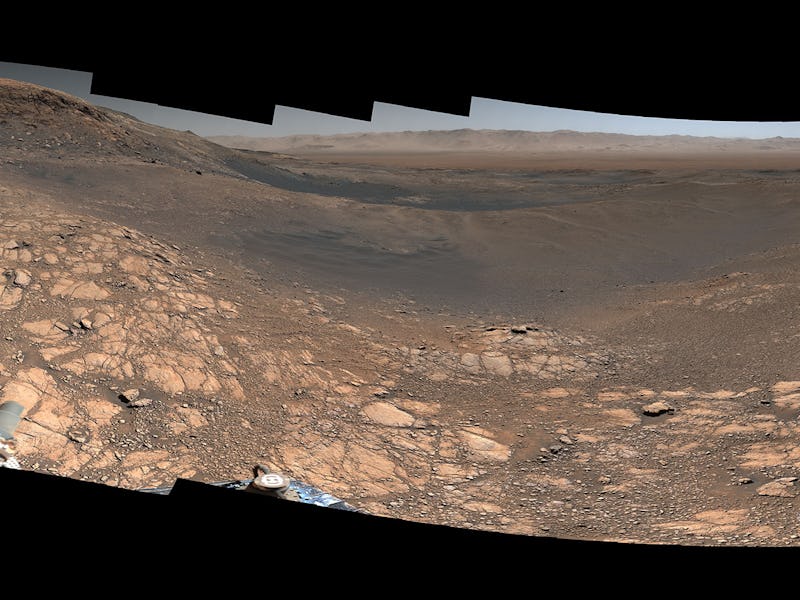NASA's Curiosity just took the highest resolution panorama of Mars to date
The rover is quite the photographer.

While America overdosed on turkey, NASA's Curiosity rover spent this past Thanksgiving holiday all alone, millions of miles away on Mars.
But unlike the rest of us, the rover was far from idle. Instead, the Martian explorer worked on its photography skills.
Between November 24 and December 1, 2019, Curiosity took more than 1,000 images of the Red Planet, piecing together the highest resolution panorama of Mars to date. The stunning image reveals the dry, dusty surface of Mars in its full glory.
"While many on our team were at home enjoying turkey, Curiosity produced this feast for the eyes," Ashwin Vasavada, Curiosity's project scientist at NASA's Jet Propulsion Laboratory, which leads the Curiosity rover mission, said in a statement.
The robot took six and a half hours to produce this detailed panorama.
NASA released the final image on Wednesday.
The panorama captures a wide view of Glen Torridon, an area of Mars that Curiosity is currently exploring near a mountain called Mount Sharp.
Curiosity used the telephoto lens on its Mast Camera to snap the high-resolution image. Altogether, it is made up of 1.8 billion pixels, revealing the Martian landscape in unprecedented detail.
The rover also used a medium-angle lens to produce a lower resolution version of just 650 million pixels, which also features the robot’s arm and front deck.
The rover may have left its finger on the lens while snapping this lower-resolution image.
The image marks the first time Curiosity has dedicated its operations to producing a 360-degree panorama of its surroundings, according to NASA.
It took Curiosity nearly seven hours to capture both shots. The holiday period meant the rover could spare the extra time, though — with its operating team away on holiday, it didn’t have many tasks on its to-do list.
While this view is unprecedented, Curiosity is known for its photography skills. In 2013, it snapped a lower-resolution panorama of the Martian surface while it was on the Rocknest site. The image is not as detailed as the new panorama, and features the rover’s shiny metallic body in the foreground. Clearly, the robot has stepped up its game over the intervening years.
Curiosity's first attempt at a panorama image.
The rover is also fond of taking selfies, snapping pictures of itself as it explores the Red Planet.
Curiosity landed on Mars in 2012 with the mission of searching for hints of microbial life that may have existed on the Red Planet during its early history.
The car-sized robot roams the Gale Crater on Mars, where it has discovered a lake that may have contained water billions of years ago, and an environment that may have supported life.
Curiosity will soon be joined by NASA’s Mars 2020 rover, which is scheduled to launch this summer. Like its robot peer, the Mars 2020 rover is designed to search for signs of current or past signs of life on the Red Planet.